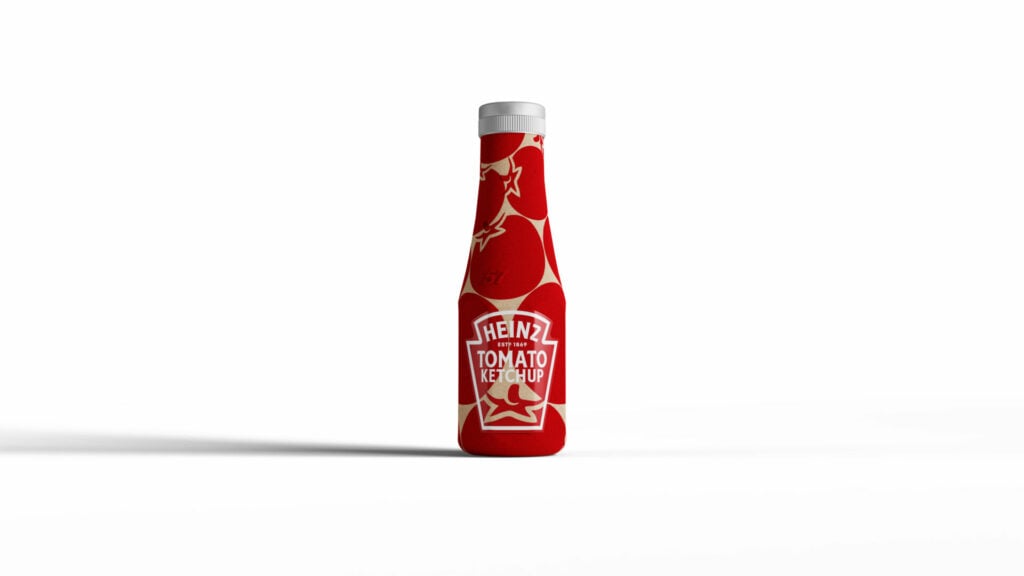Globally, our plastic usage is staggering, with one million plastic bottles purchased every minute and up to five trillion plastic bags used annually. Shockingly, half of all plastic produced is designed to be disposable, generating an alarming amount of waste.
According to the United Nations Environment Programme (UNEP), global plastic production has increased from 1.5 million metric tons in 1950 to 400 million metric tons today, with plastic waste generation following a similar trajectory.
Plastic, including microplastics, has become a stark feature of our natural world. It is now a defining characteristic of the Anthropocene – our current geological epoch – and has even inspired the term ‘plastisphere’ – a newly discovered ecosystem of bacteria, fungi and algae, that have adapted to living on the surface of plastic debris floating in the world’s oceans.
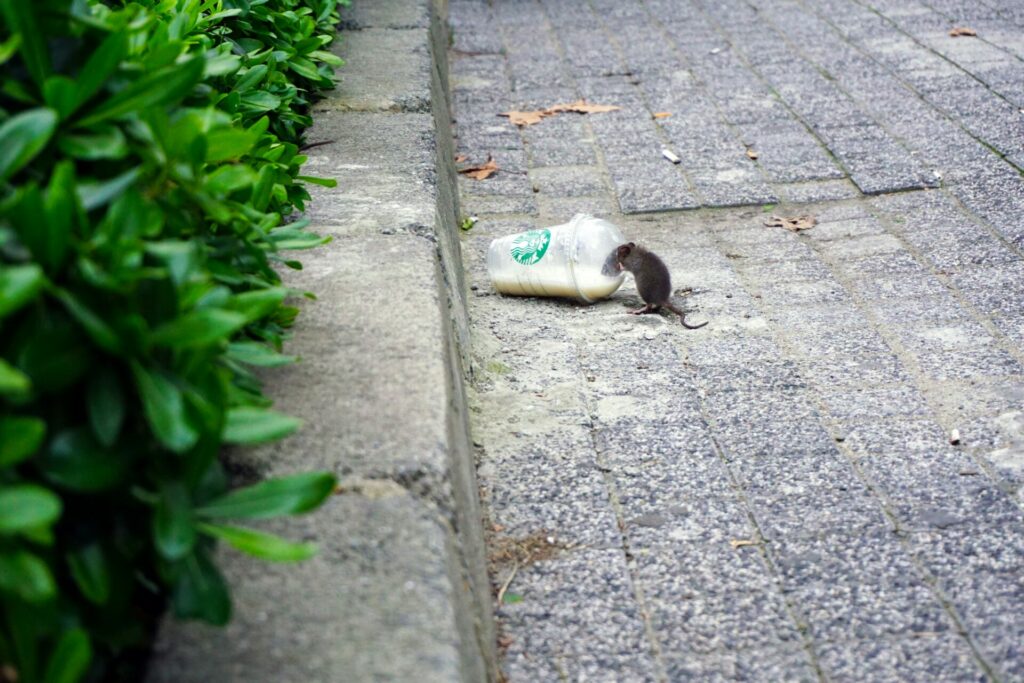
Between the 1970s and the 1990s plastic waste more than tripled, and in the early 2000s the amount of waste generated rose more in a single decade than it had in the previous 40 years.
Our unchecked plastic waste has led to a global pollution crisis. While the problem was barely visible twenty years ago, there is now nowhere in the world that plastic is not found.
Cigarette butts – containing tiny plastic fibers in their filters – are the the most common type of plastic waste. Other items include food wrappers, bottles, bottle caps, bags, straws and stirrers, used daily by countless individuals, who often don’t consider that there is no ‘away’ in throwaway.
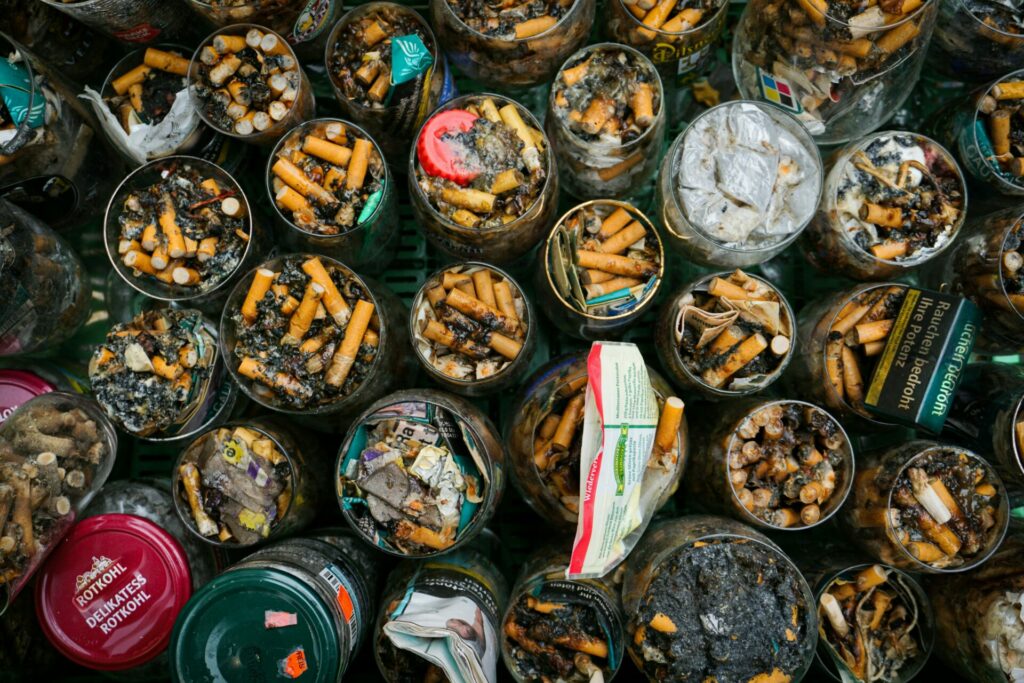
A Double-Edged Sword
Ironically, in the late 1800s it was the search for an alternative material to elephant ivory for billiard balls that led to the invention of celluloid by American inventor John Wesley Hyatt. This early plastic, developed in 1869, marked a breakthrough for the product but the the real plastic boom occurred in the post-World War II era. Starting in the 1950s and into the 60s and 70s, it was driven by the growing popularity of plastic for packaging due to its low cost, versatility and durability.
To put this into perspective, consider that a plastic water bottle discarded today could still be present in some form on Earth when our great-great-great-grandchildren are alive
Fast forward to today, and around 36 percent of all plastics manufactured are for packaging, which includes single-use items for food and beverages. Unfortunately, of all the plastic we use, 40 percent is used just once.
But the same very properties that make plastic so useful, also make them almost impossible for nature to break down. It can take up to 500 years for plastics to decompose. To put this into perspective, consider that a plastic water bottle discarded today could still be present in some form on Earth when our great-great-great-grandchildren are alive.
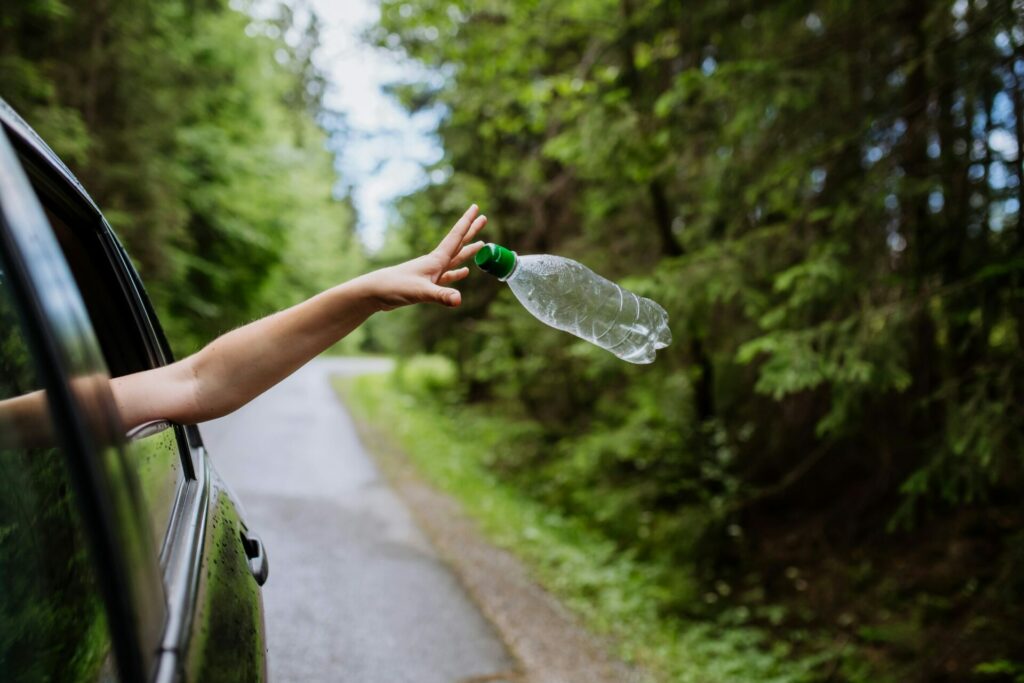
Plastics in our Oceans
This slow decomposition rate is a major factor in the alarming amount of plastic waste found in the environment, particularly in the world’s oceans. Our seas are currently plagued with an estimated 75 to 199 million tonnes of plastic – that’s the same as the combined weight of nearly 800 million average-sized cars.
Our seas are currently plagued with an estimated 75 to 199 million tonnes of plastic – that’s the same as the combined weight of nearly 800 million average-sized cars
Without a drastic shift, the volume of plastic waste entering the seas could surge to a staggering 37 million tonnes per year by 2040 with some estimates suggesting there could be more plastic than fish in our oceans by 2048, if current trends continue.
Plastic pollution in our oceans has serious consequences for marine biodiversity. Floating debris can entangle and suffocate animals like sea turtles, seabirds and marine mammals, impeding their ability to swim, feed and reproduce.
In the 1960s, less than 5 percent of birds were found with plastic in their stomachs. Twenty years later, over 80 percent of birds had plastic in their stomachs. It is projected that by 2050, 99 percent of seabird species will be ingesting plastic.
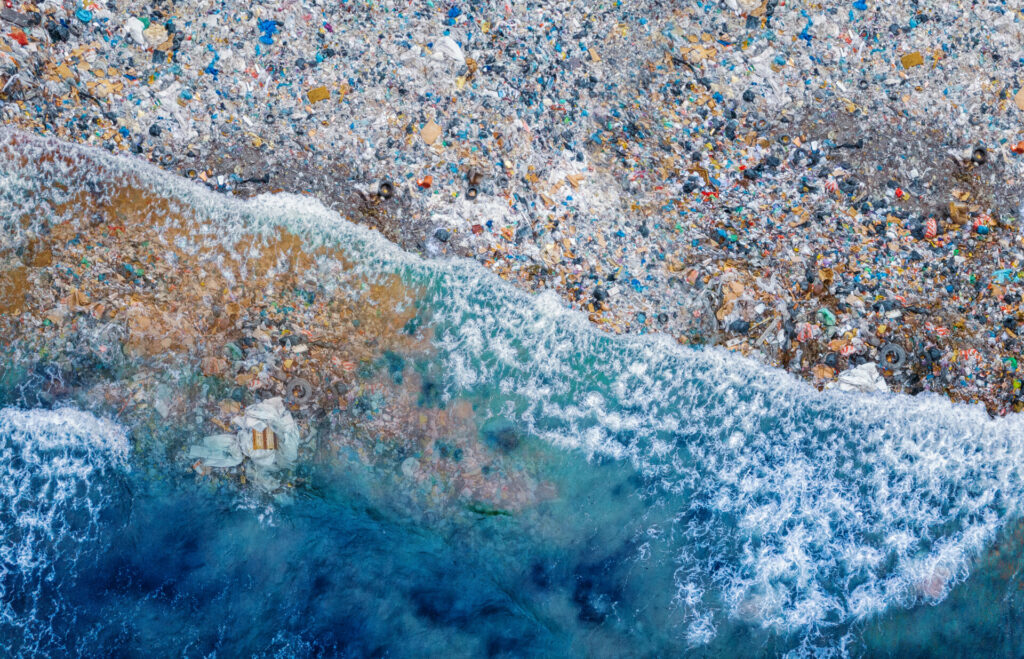
It’s not just birds and fish that are at risk from those toxic chemicals. Plastic pollution impacts the entire marine food web, as microplastics accumulate in smaller organisms and are transferred to larger predators which eventually make their way from seafood into the human food chain.
According to a study, it’s estimated that the average person consumes approximately 5 grams of microplastics every week. That’s equivalent to the size of a credit card.
These minute pieces of plastic enter the human body both via various means. Microplastics have been found in food sources including drinking water, seafood, fruits and vegetables – infiltrated through contaminated water, polluted soil and pesticides – and even in the air we breathe.
According to a study by the University of Newcastle, Australia it’s estimated that the average person consumes approximately 5 grams of microplastics every week. That’s equivalent to the size of a credit card.
Microplastics have been found in our lungs, livers, spleens and kidneys. A recent study found microplastics in the placentas of newborn babies. The full extent of the impact of this on human health is still unknown.
Turning off the tap
To halt the relentless flow of plastic waste into the environment, a radical shift is necessary.
Global recycling efforts have failed to keep pace with the staggering 7 billion tons of plastic waste generated so far, with less than 10 percent being recycled.
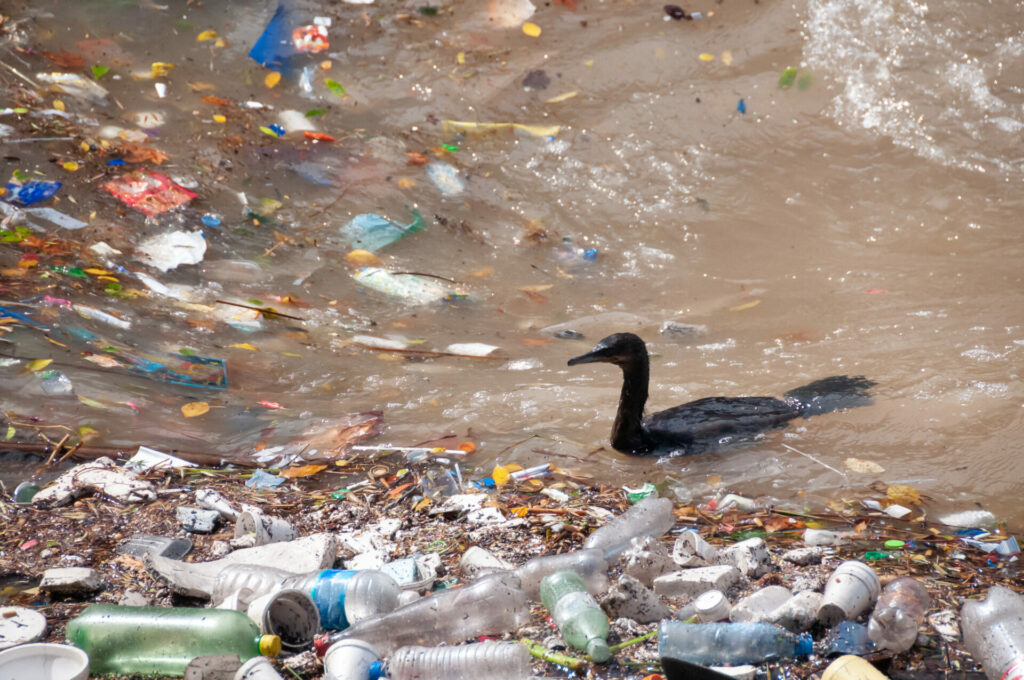
Reducing plastic consumption is a crucial step towards tackling the global plastic waste crisis. By moving away from single-use plastics towards reusable alternatives, individuals, businesses, and governments can significantly decrease the demand for plastic products.
When you take into account that the average person generates approximately 60 kilograms of plastic waste per year, simple actions can go a long way. Carrying reusable grocery bags, opting for refillable water bottles, installing a water filter at home and choosing zero-waste alternatives in the home, can drastically reduce an individual’s plastic waste footprint.
‘By harnessing the natural technology all around us … we really can live in harmony on this planet with 7, 8, 9 billion people. And we can live without waste; we don’t have to throw things away. We have a tremendous biosphere that can provide everything we need.’
Eben Bayer, CEO and founder Ecovative Design
On a corporate level, the development of biodegradable plastics offers a promising solution. Companies such as Notpla and Ecovative Design are leading the way in creating innovative alternatives to conventional plastics.
Notpla uses seaweed to create biodegradable packaging materials that naturally break down within weeks, while Ecovative Design develops alternatives to plastic foams using agricultural waste and mushroom mycelium.
‘By harnessing the natural technology all around us … we really can live in harmony on this planet with 7, 8, 9 billion people.’ said Ecovatve design founder and CEO, Eben Bayer. ‘And we can live without waste; we don’t have to throw things away. We have a tremendous biosphere that can provide everything we need.’

As biodegradable plastics become more widely available and economically viable, they have the potential to replace conventional plastics across industries.
Holding companies accountable for the entire lifecycle of their plastic products is also essential in addressing the plastic waste crisis. Extended producer responsibility (EPR) policies require manufacturers to take responsibility for their products’ disposal and recycling, incentivising them to design more sustainable packaging and materials.
Companies such as Unilever and IKEA have embraced this approach. Unilever for example, has committed to using 100 percent reusable, recyclable, or compostable plastic packaging by 2025. While IKEA has implemented various EPR initiatives, including a buyback program for used furniture, charging a fee for plastic bags to fund environmental projects, and collaborating with local waste management companies to ensure proper recycling of their products.
It is a collective approach that is required to deal with the stark reality of plastic pollution. The frightening figures and facts are a wake-up call, but by reducing plastic consumption, promoting sustainable alternatives, and implementing policies that hold companies accountable, the world can hopefully start to turn the tide on the global plastic waste crisis.









